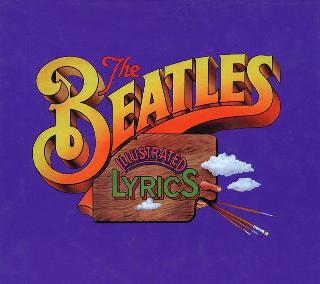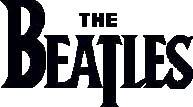Index
Home
Vorige
Let It Be
Composer(s) : Lennon and McCartney
Year : 1969
Chords/Tabs: Let It Be
Notes on "Let It Be' (LIB)
KEY C Major
METER 4/4
FORM Intro -> Verse -> Refrain ->
Verse -> Refrain -> Refrain -> Coda ->
Verse (Instrumental) -> Refrain -> Verse -> Refrain ->
Refrain -> Coda/Outro (w/complete ending)
GENERAL POINTS OF INTEREST
Style and Form
- "Let It Be" (LIB) quite effortlessly overflows with an emotional
earnestness and prodigious melodic thrust that are both familiar
qualities common to much of Paul's best work. But, LIB, with its quaint,
diatonic style, its inclusion of pseudo-religious imagery in the lyrics,
and its lingering afterglow of having stated some mysterious truth, earns
it a unique, high place in Macca's songbook, a niche that it shares,
perhaps alone, with "Hey Jude."
- At risk of provoking still more calls for silly "Top 5" lists in the
r.m.b. newsgroup, I'd also propose that LIB, somewhat independent
of its intrinsic musical virtues or the question of whether you
particularly like it or not, is deserving of the rarified label
"definitive" with respect to the Beatles, both as a group, and in
terms of their output.
- We've got three different versions of LIB all based on the same Take
27 recorded 1/31/69. Two are official releases (the single, and the
_LIB_ album track), and the third one (the _Get Back_ album track)
is readily available on bootleg. Pardon me, but I will use the
the latter "unofficial" version in this study as our authoritative
point of reference because, among the three, it is the least tampered
with, the one closest to the "unvarnished truth;" even if its guitar
solo, in flagrant violation of the all natural, no overdub policy
of the Get Back project, was overdubbed much later.
- Additional alternate versions abound in the channel of so-called
unofficially released recordings for the entire reportoire of the
Get Back era, as we've been noting the few studies we've already
completed of songs from the period. Though I do not have the bandwidth
needed to give such outtakes the measure-by-measure attention they
deserve on some level, I do plan to make at least passing reference
to the most notable aspects of the most interesting outtakes as we
continue our studies.
- In the case of LIB, consider the following:
- A rough Twickenham runthrough that is clearly much earlier than
the one 1/23 version on Anthology 3. This take has:
- No intro.
- Mumbled scat singing and the phrase "read the Record Mirror"
to fill space where lyrics were not yet written.
- Paul explaining over the music that the backing track to the
solo section is the same as the verse.
- Following the solo there are 2 refrains, no final verse,
and a three-peat of the coda.
- 1/23 version on A3:
- Single coda phrase used for the intro.
- Lyrics of final verse are an identical repeat of 1st verse.
- Version in the _Let It Be_ film:
- 3 refrains and single coda phrase before guitar solo.
- Final verse and refrain substitute the phrase "no sorrow"
for the expected "an answer;" compare w/UM5, below.
- Lead-off track from so-called "WBCN" _Get Back_ acetate; also
appears on Celluloid Rock:
- Intro preceded by Paul's campy count in of "a-one-two-three-four!"
- Double coda used for intro.
- Lyrics of final verse repeat the 1st verse but with the order
of the couplets reversed.
- Outtake on Unsurpassed Masters, volume 5:
- Opening giggle about "second clapper" helps date this as a later
take from 1/31, since the original remark about "synch the second
clap" is associated (on the _GB_ album track) with the take used
for the oficial version.
- Lead vocal sounds horse, backing vocals sound off key.
- Final verse and refrain substitute the phrase "no sorrow"
for the expected "an answer."
- But let's get back to musical reality for a change.
Melody and Harmony
- The tune (as well as the guitar solo) is almost 100% purely penatonic;
i.e. 1,2,3,5,6/C,D,E,G,A. The only exception is the way that the 4th
scale degree (F) shows up as a neighboring tone, as in the phrase
"speaking words of wisdom," on the word "words."
- The melodies for both verse and refrain span the range a 9th, but
the refrain is pitched a 3rd higher than the verse; the verse runs
from E up to F, and the refrain runs from G up to A.
- The final phrases of both verse and refrain are identical, but they
sound somehow different in their respective contexts. In the verse,
the phrase appears near the very top of the melodic arch. In the
refrain it's part of the arch's closing downward path.
- The harmony is limited to just four chords: I, IV, V, and vi, and it
never strays from the home key. Both harmony and tune are diatonic to
an unusually strict degree that is relieved only by a frequent use of
appoggiaturas (along with a veritable textbook's worth of examples of
other sophisticated ornamentation techniques which will repay careful
study) and a lonesome appearance of the bluesy flat 7th in the instrumental
arrangement of the coda section.
- In spite of the V chord's ample appearance, the song retains a modal
harmonic flavor due to the almost consistent use of Plagal (IV -> I)
cadences and the way in which V seems to almost move to either IV (like
in the blues) or to vi (like the classical deceptive cadence) instead
of to I.
- Don't tell your Music Theory 101 Professor, but Paul leaves a number
of parallel 5ths between the bassline and tune in this song that are
barely disguised by the ornamentation of the tune. We'll single these
out in our walkthrough.
Arrangement
- The basic ensemble includes piano, organ, bass (John!, at least in
the film), lead guitar, and light drumming. Paul's solo vocal is
accompanied by backing voices in parallel thirds for the refrain.
- In terms of instrumental layering, the basic plan starts off with
piano solo, adds in cymbals followed at a discreet distance by bass
in the second verse, then adds the full drum kit for the following
refrains and solo section, and pulls back to less percussion for the final
verse before restoring the fuller sound for the big finish.
- The only overdub on the _GB_ album track is the lead guitar solo.
The single version adds a brass arrangement in the refrains that
is mixed relatively quietly, an electric piano ovedubbed in the
codas, and marracas in the final verse. The Spectorized _LIB_ album
track features a different guitar solo, the brass, marracas, cymbals
and original bass part mixed very loud, additional lead guitar licks
in the final sections of the track, a different drumming pattern on
the cymbals, and an additional refrain section tacked on before the
bitter end. They didn't call it the "wall of sound" for nothin'.
- Paul shows off his talent for Chopinesque melodic variation in the
handling of the phrases "they will see" in the second verse, and "shine
on 'til tomorrow" in the final verse. He also starts throwing in
those trademark flips of an octave upward toward the end of each
section starting with the refrain that follows the guitar solo.
In a number of the outtakes, he starts using those upflips a bit
much earlier in the game; an idea apprently dropped as unwise for
the final version.
SECTION-BY-SECTION WALKTHROUGH
Intro
- The eight measure intro cleverly exposes the harmony of the first half
of the verse without giving away what will be the tune:
|C |G |a |F |
C: I V vi IV
|C |G |F |C |
I V IV I
- The harmonic shape is closed and the harmonic rhythm steady. In fact,
a relaxing subliminal backbet of "1, 2-and, 3, 4-and, 1" lies at the heart
of the music.
- A pair of fine characterizing details on the backing track:
- Frequently, (but not 100% of the time), Paul uses a 7->6 appoggiature
on the downbeat of measure 4, making the chord sound possibly like
ii6/5 instead of IV.
- Parallel tenths run between the bassline and the accompaniment from
measure 6 through 8, including a couple of passing notes in the second
half of measure 7.
- Is mine the only copy of the _LIB_ album CD in which one hears a small
click (like the accidental tapping of two drum sticks) toward the very
end of this intro?
Verse
- The Verse is built on a repeat of the Intro.
- The second repeat of the basic phrase reiterates the parallel tenth
trick in the second half of measure 8 in order to lead into the refrain.
- The parallel 5ths I promised you are:
- In measures 2 - 4 between the final syllables of the words "trouble"
and "mother" and the first syllable of "Mary" and the word "to."
- In measures 6 -7 between the final syllable of "wisdom" and second
note of the melissma on the word "be."
Refrain
- The refrain is eight measures long in an AB phrasing pattern:
soprano |E |- |- |C |
alto |E |D |C |- |
tenor |C |B |A |G |
chords |a |e |F |C |
vi iii 6/5 IV I
|C |G |F |C |
I V IV I
- Both phrases end on I. The first phrase at least starts away from it.
- That first phrase features a symmetrical chord progression in terms of
root movement (the move of a 4th downward between vi -> iii and IV -> I).
The stepwise bassline and the voice leading of the upper parts (dig it,
parallel 10ths all over again!) disguise this a bit.
- In particular, note how the pitch 'E' is sustained through the first
three measures and with G in the bass makes the chord in measure 2 sound
ambiguously as much like V (with an added 6th) as the iii7 in first
inversion that I'm labelling it as.
- Again, the parallel 5ths I promised you are in measures 1 - 3 between
one of the backing vocals and the bassline.
Coda
- In its basic form the coda is a four measure phrase with a convergent
harmonic shape. In its initial appearance before the guitar solo, it
is repeated with the second half of the final measure implying a move
to the IV chord to better motivate the section that follows:
|F |C |G F |C |
IV I V IV I
|F |C |G F |C (F) |
IV I V IV I (IV)
- In the first phrase, a Bb passing tone in the second half of measure 2
provides the only appearance of a non-diatonic tone in the entire song,
and sets up a cross relation with the B natural in the G Major chord
that follows.
Outro
- The outro uses just one iteration of the coda phrase, giving us a
wonderful object lesson in how "less is more." Play out the doubled
up alternative in your head and observe how turgidly pompous is sounds.
- The bass part does its own delayed and quite slow glissando up an octave
as the final chord fades away. Makes you wonder if John was inspired
by Paul's vocal use of the same effect.
SOME FINAL THOUGHTS
- Connections or comparisons between the Beatles and Beethoven can
as easily run aground of their own over-reaching fatuous facility,
as they can hit their mark. I dare say that with our current song
we hit the jackpot.
- Beethoven's last completed and published work is the String Quartet
in F, Opus 135. He prefaces the final movement with a half-joking
musical puzzle that reads, "Muss es sein? Es muss sein!" ("Must
it be? It must be!") The question phrase is set to a theme that
is halting and ominous in tone with the accent of the phrase on
the last word, "be." The answer phrase is set to a theme that is
forthright and calmly cheerful in tone, with the accent of the phrase
on the middle word, "must." The two themes are both alternate with, and
are pitted against each other throughout this final movement, with
the answer phrase very definitely getting the upper hand and the final
word in the end.
- Musicologists are undecided on how we should realistically read into
this apparent "valediction" from the composer. Did he neccessarily
realize it would turn out to be his last work? Did he intend the
riddle to be taken so "seriously?"
- The parallels with our current song ("Lass es sein") and its context
within the released works of our Own Sweet composers are hopefully obvious.
- In either case, I think that one is intruigued and also challenged by an
ambiguous duality in the message:
- Petition: May something I want to happen but which might not be
forthcoming be allowed to become an actuality.
- Acceptance: With complete faith and patience in the inevitability
of the outcome that is not the one I may "want," I wistfully let go
of any desire for that different eventuality, and ask that whatever is
decreed by fate to be may happen with all good speed.
- Our human foible here is to be trapped into the unquestioned assumption
that the two prayers above are automatically in opposition to each other.
Indeed, the truly sublime appeal of LIB as well as LVB's Opus 135 is in
the extent to which each encourages us toward a vivid foretaste of
that blessed state in which both desires converge and become one and
the same.
Regards,
Alan (awp@world.std.com)
---
"Well, I'm going to broaden my outlook." 051699#165
---
Copyright (c) 1999 by Alan W. Pollack
All Rights Reserved
This article may be reproduced, retransmitted, redistributed and
otherwise propagated at will, provided that this notice remains
intact and in place.
Ook op Past Masters, Vols. 2:
Ook op Let It Be:
Ook op Let It Be... Naked:
Ook op 1967-1970:
Ook op 1:
(c) 2024 Serge Girard


 (c) Alan Aldrigde, The Beatles Illustrated Lyrics
(c) Alan Aldrigde, The Beatles Illustrated Lyrics